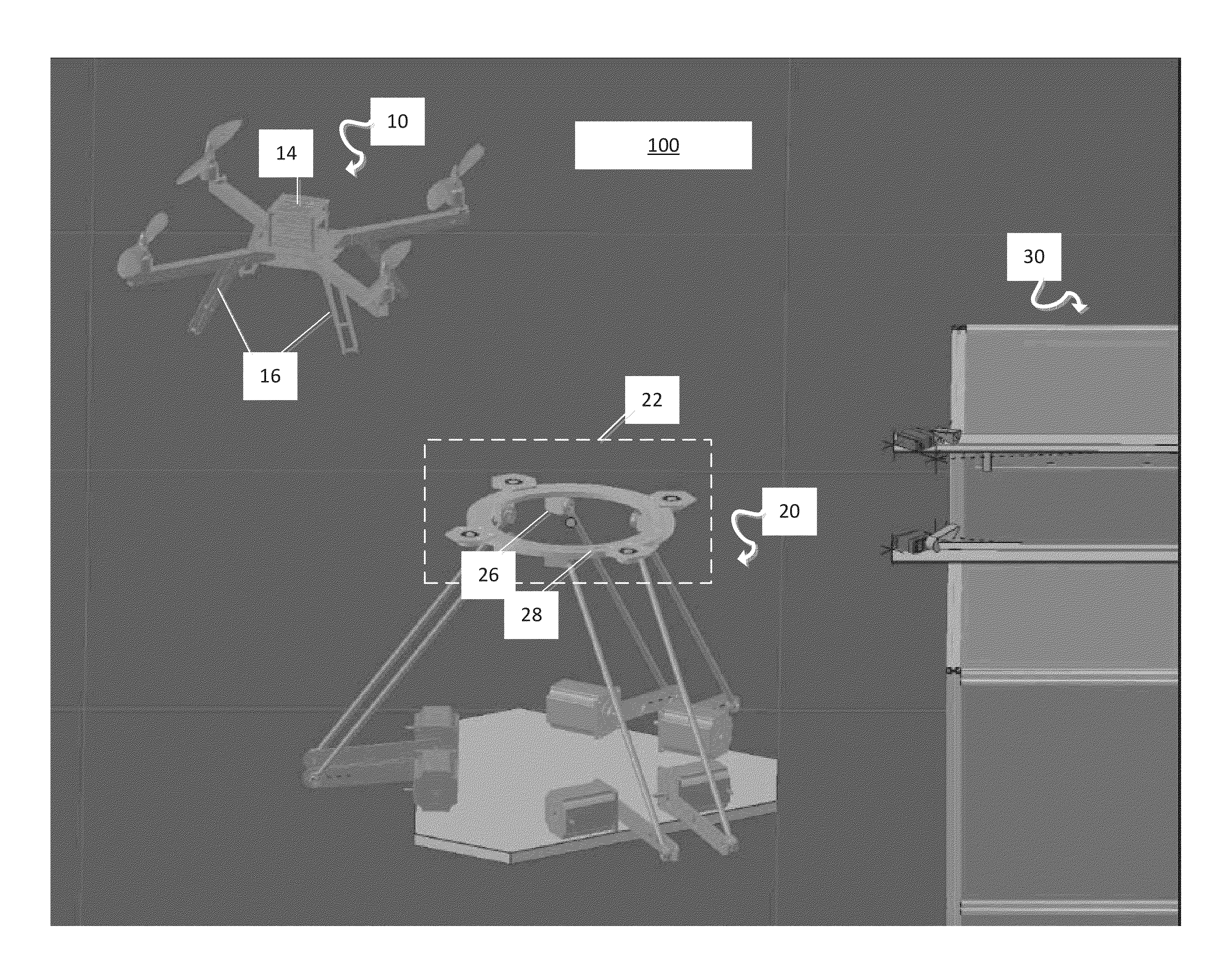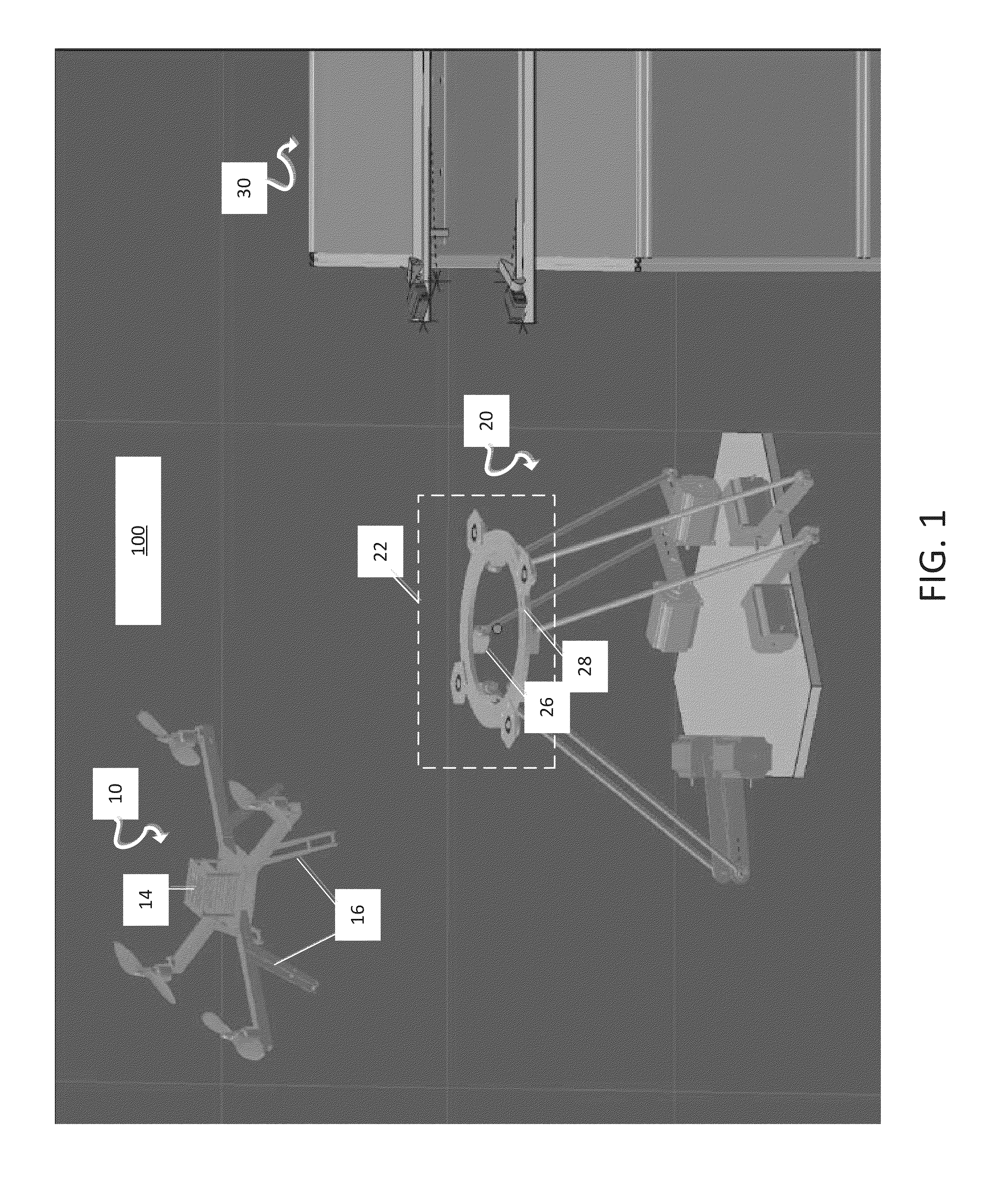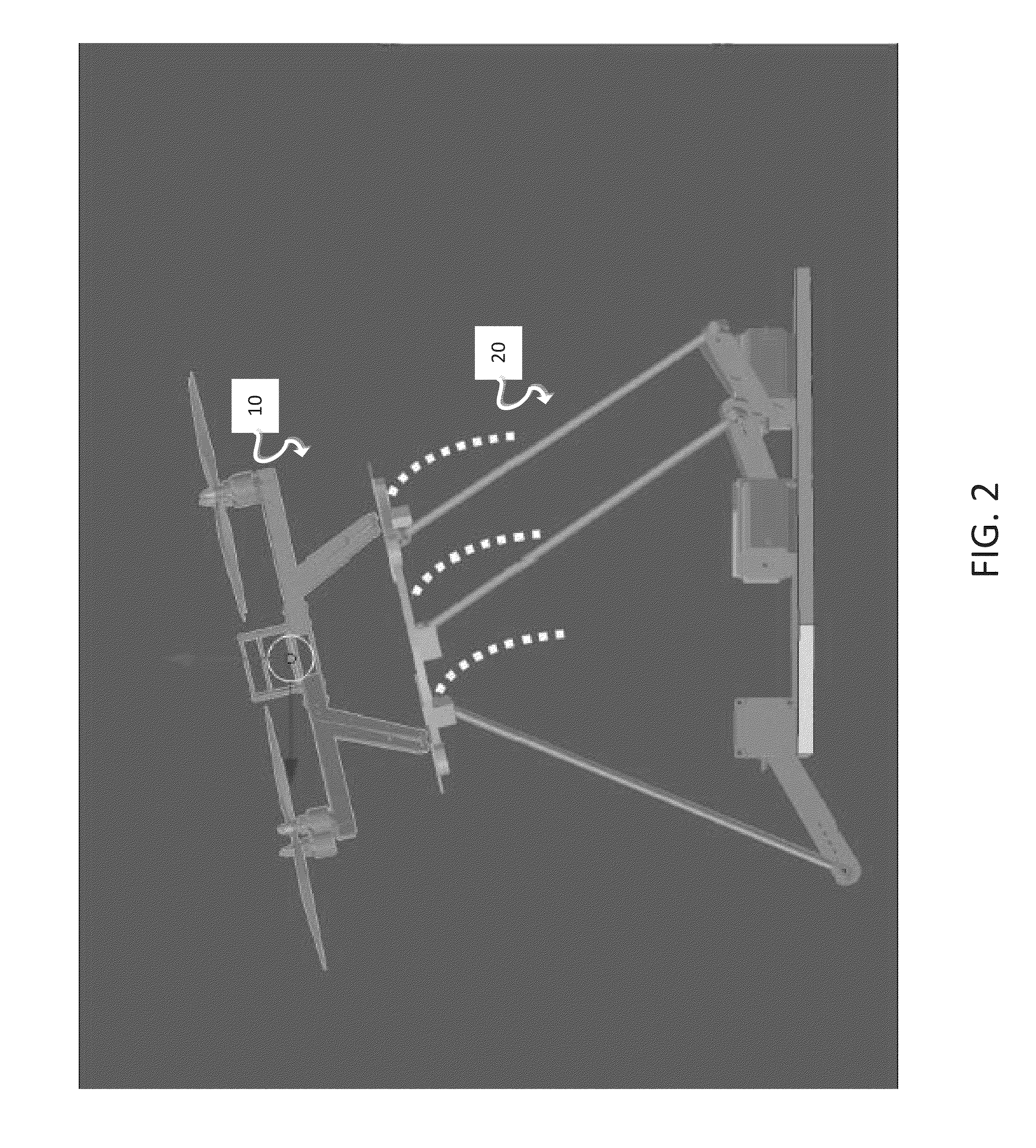System for automatic takeoff and landing by interception of small uavs
a technology for interception and small uavs, applied in the direction of arrester hooks, navigation instruments, instruments, etc., can solve the problems of cumbersome human deployment and management, limited flight time, and laborious and time-consuming operation cycles, so as to facilitate automatic capture and launch of small uavs, improve the accuracy of relative position, and improve the effect of trajectory estimation
- Summary
- Abstract
- Description
- Claims
- Application Information
AI Technical Summary
Benefits of technology
Problems solved by technology
Method used
Image
Examples
Embodiment Construction
[0023]A system 100 for facilitating automatic takeoff and landing of small UAVs is shown in FIG. 1. At least one UAV 10 may be configured to takeoff from and land on LCM 20. The UAV 10 may include a communication mechanism 14, such as, e.g., a transceiver (not shown), that transmits and / or receives data to / from LCM 20 via a communication link. The communication mechanism 14 may be configured, for example, to radio position and flight path information to LCM 20. The communication mechanism 14 may also be configured to receive mission flight instructions, for example, wirelessly. The mission and flight coordinates can be updated in real time wirelessly while the UAV is in flight. According to some aspects of the disclosure, where multiple UAVs are in flight, one or more of the UAVs may act as repeaters to transmit wirelessly received mission and flight data, thereby extending the communication range of the system. UAV 10 may comprise legs 16 configured to mate with a locking mechanism...
PUM
 Login to View More
Login to View More Abstract
Description
Claims
Application Information
 Login to View More
Login to View More - R&D
- Intellectual Property
- Life Sciences
- Materials
- Tech Scout
- Unparalleled Data Quality
- Higher Quality Content
- 60% Fewer Hallucinations
Browse by: Latest US Patents, China's latest patents, Technical Efficacy Thesaurus, Application Domain, Technology Topic, Popular Technical Reports.
© 2025 PatSnap. All rights reserved.Legal|Privacy policy|Modern Slavery Act Transparency Statement|Sitemap|About US| Contact US: help@patsnap.com



